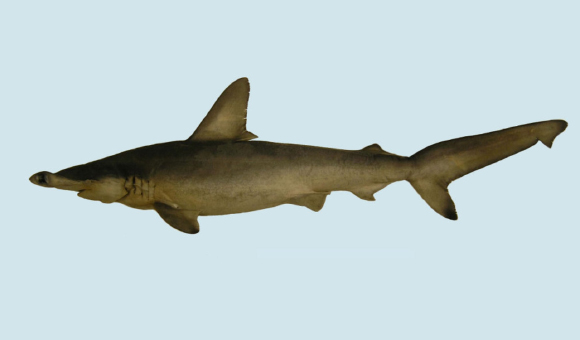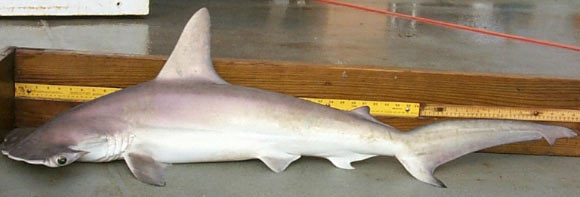Ichthyologists have discovered a new species of scalloped hammerhead shark off the South Carolina coast.
The new species, scientifically named Sphyrna gilberti, is a harmless, grey to brown hammerhead shark belonging to the family Sphyrnidae.
Sphyrna gilberti, commonly named the Carolina hammerhead, was discovered by ichthyologist Prof Joe Quattro from the University of South Carolina and his colleagues when they were studying scalloped hammerhead sharks (Sphyrna lewini).
The specimens that they were collecting had two different genetic signatures, in both the mitochondrial and nuclear genomes.
Searching the literature, the scientists found that Dr Carter Gilbert, the renowned curator of the Florida Museum of Natural History from 1961 to 1998, had described an anomalous scalloped hammerhead in 1967 that had 10 fewer vertebrae than Sphyrna lewini.
It had been caught near Charleston and, because the sample was in the National Museum of Natural History, the team was able to examine it morphologically and suggest that it constituted a cryptic species – that is, one that is physically nearly indistinguishable from the more common species.
After publishing the preliminary genetic evidence for the new species in the journal Marine Biology in 2006, Prof Quattro’s team followed up by making thorough measurements of 54 Sphyrna gilberti individuals to fully describe the new species.
The Carolina hammerhead strongly resembles its close relative, the Scalloped hammerhead shark. The difference in vertebrae, 10 fewer in Sphyrna gilberti, is the defining morphological difference.
The description of the new species appears in the paper published in the journal Zootaxa.
Sphyrna gilberti is “named in honor of ichthyologist Carter R. Gilbert, who first reported an anomalous specimen of Sphyrna lewini collected off Charleston. Based on vertebral count and collection location, the anomalous specimen is likely the first recorded individual of Sphyrna gilberti,” Prof Quattro with co-authors wrote in the Zootaxa paper.
According to the paper, the 56 specimens of Sphyrna gilberti collected in the coastal waters of South Carolina were juveniles measuring 40 – 50 cm long. The estimated adult length is about 3 – 4 m.
“Populations of sharks have greatly diminished over the past few decades. The biomass of scalloped hammerheads off the coast of the eastern U.S. is less than 10 percent of what it was historically,” Prof Quattro said.
“Here, we’re showing that the scalloped hammerheads are actually two things. Since the cryptic species is much rarer than the lewini, God only knows what its population levels have dropped to.”
______
Bibliographic information: Quattro JM et al. 2013. Sphyrna gilberti sp. nov., a new hammerhead shark (Carcharhiniformes, Sphyrnidae) from the western Atlantic Ocean. Zootaxa, vol. 3702, no. 2; doi: 10.11646/zootaxa.3702.2.5









